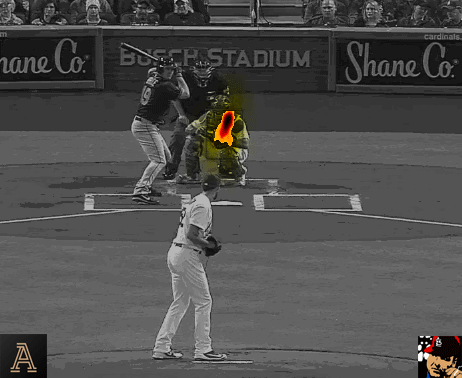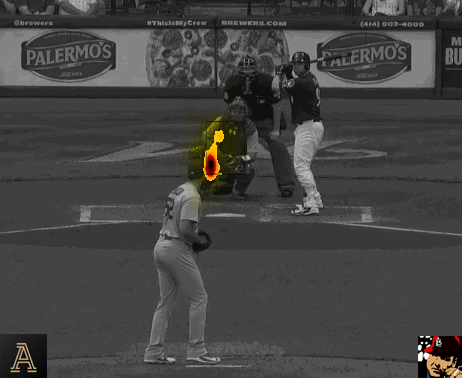When Michael Wacha was 21 years old, just one year removed from being drafted 19th overall in the 2012 MLB draft, the rookie right-hander played a vital role in the St. Louis Cardinals’ run to the 2013 World Series. He staved off elimination in game four of the National League Division Series against the Pirates at PNC Park —an overwhelming road environment that year, and then for his encore, dominated the Dodgers during his two NLCS starts, ultimately earning the honor of series MVP. Wacha’s World Series performance against the Red Sox was forgettable, but the bar had already been set. Fair or not, he was expected to be a force out of the starting rotation for many years to come.
Advertisement
Fast forward to 2018, and Wacha, now 26, finally appears to be reaching — and hopefully clearing — the bar he had set for himself back in October of 2013. Sure, it may have taken a little while to get here, but let’s be happy with the present and look toward the future, all while appreciating the obstacles Wacha conquered to get here. Faced with a truly unique shoulder condition, Wacha persevered. His mechanics almost certainly contributed to his shoulder health, but they also are crucial to his success, so reconfiguring them altogether wasn’t a viable option. Instead, Wacha rehabbed vigorously and trained tirelessly to rebuild the strength in his throwing shoulder.
Twelve starts into 2018, Wacha has put together seven straight pitcher wins along with one of the lowest ERAs in the National League. The rest of his 2018 statistics are pretty impressive as well:
![]()
Should he eclipse his current career high of 30 starts in a single season (which came in 2017), he will likely also set a new career high for innings pitched, as he is currently averaging just short of six innings per start. Both his strikeout and walk rates could improve (and they are trending in the right direction), but his ability to keep the ball in the park has been arguably his most promising development. Thus, what is the 2018 version of Wacha doing that the 2014 through 2017 versions failed to do? Heck, how much different is 2018 Wacha from the wildly successful 2013 version? Via Brooks Baseball, let’s first review Wacha’s repertoire in 2018:

Gone are the days when Wacha relied almost exclusively on the four-seam fastball-changeup combination. While extremely effective in 2013, it was not a repertoire suitable for lasting success. In fact, Wacha has developed the ability to throw four above-average to plus pitches in virtually any count. Sure, the four-seamer remains his clear primary option, followed by the changeup (as has been the case since day one), but the cutter and curveball exist as two realistic secondary options as well.
Advertisement
Gone, too, are the days when all we talked about was the “downward plane” Wacha’s height, release point, and mechanics yielded on each of his pitches. During spring training, Derrick Goold, of the St. Louis Post Dispatch, reported that new pitching coach Mike Maddux was challenging members of his new pitching staff to elevate their fastballs. Given the magnitude of vertical movement (think “rise” when discussing fastballs specifically) on Wacha’s four-seamer, he was the perfect candidate to go up in the zone with his fastball. Bring his secondary offerings — all three of them, really — into the equation, and it makes even more sense to elevate his fastball.
Before reviewing Wacha’s refined location this season, let’s revisit his four-seamer’s core location versus lefties in 2017, via the great @cardinalsgifs:

As you can see in the overlaid heat map, the pitch is not necessarily at the bottom of the zone, but it still fails to reach what one would consider the top of the zone. Jason Heyward absolutely launched this four-seamer on July 23 at Wrigley Field. Given that Heyward has been a below average hitter since the beginning of the 2016 season, this serves as the perfect example of the amount of damage that can be done against a not-quite-elevated four-seamer.
So far in 2018, Wacha’s core four-seamer location versus lefties has been consistently elevated, as you can see in this swing-and-miss by Jay Bruce on April 25:

Add in the exit velocity zone profile via Baseball Savant, and it makes this core location even more desirable for a right-handed four-seamer versus a left-handed hitter. Even if the hitter does connect — something Bruce failed to do in this example — this part of the zone does not consistently yield strong contact. One of the more recent additions to the discussion of command is throwing pitches in the least-dangerous locations. Wacha is doing exactly that in 2018, though he is experiencing a bit of batted ball misfortune up to this point.
Advertisement
Wacha’s location refinements did not stop with the four-seamer versus lefties. He, too, has changed where he throws the cutter to righties — a pitch that was mashed last season, despite a completely ordinary batting average on balls in play (BABIP). Here is a July 28 example versus A.J. Pollock of where Wacha readily located the cutter in 2017:

As you can see by the batted ball metrics, this pitch did not end well for Wacha. And despite Harrison Bader doing a fantastic job cutting the ball off in the gap, Pollock’s speed allowed him to still reach second for a double. Of the 17 home runs Wacha allowed in 2017, five of them occurred on cutters to right-handed hitters. Given Wacha’s core and the exit velocity zone profile via Baseball Savant, it makes sense that opposing righties were successful against the pitch.
Fortunately, the core location of Wacha’s cutter has shifted from one of the highest average exit velocity zones (91.6 mph) to one of the lowest (84.7 mph) thus far in 2018. Its current core location is notorious for getting righties to roll over on pitches to the third baseman or short stop. While Manny Piña doesn’t necessarily “roll over” on this May 29th cutter below, its relatively harmless exit velocity allowed for an easy 6-3 putout.

Finally, let’s discuss arguably my favorite Wacha development thus far: his ability to tunnel the changeup-fastball sequence. Notice the order of that sequence. It’s important to consider because we so commonly see the fastball (up in the zone)-changeup (down in the zone) sequence — and don’t get me wrong, Wacha still utilizes that.
But the fastball-changeup sequence can become predictable. Thus, setting up the fastball with the changeup in counts normally reserved for offspeed pitches can not only keep hitters off balance, but can lead to a whole lot of fastball swings and misses.
Let’s see where Wacha’s changeup-fastball sequence ranks among fellow MLB pitchers using PreMax, the pitch tunneling statistic that, as its creators at Baseball Prospectus explain, is “the distance between back-to-back pitches at the decision-making point, as seen from the batter’s point of view.” Of those throwing the sequence at least 40 times, only three have exhibited a smaller PreMax than Wacha (1.26 inches versus lefties): Trevor Williams versus lefties (1.25 inches), Chris Sale versus righties (1.25 inches), and Aaron Nola versus lefties (1.22 inches).
Another way to describe PreMax is that it’s how close two back-to-back pitches look to the batter by the time he has to make a decision on whether or not to swing. If these explanations still don’t make the concept easy enough to understand, maybe this changeup-fastball strikeout sequence to Scooter Gennett on April 12 will:

I have been critically researching tunneling for roughly five months now, and all things considered, I have yet to see a better two-pitch tunnel sequence. The two pitches greatly differ in velocity, final location, and movement, and yet, they follow virtually the same path up until Gennett’s decision-making point.
Advertisement
As you can see by Gennett’s footwork, his balance was thrown off by the changeup. His disbelief that the pitch managed to paint the corner also probably clouded his thoughts a bit. Thus, he was set up perfectly for an up-and-in fastball. Wacha didn’t throw any ordinary up-and-in fastball, either. It was 97.2 mph, on the corner perfectly, and out of the exact same tunnel as the preceding changeup.
For those who think the off-center camera angle deceivingly makes this tunnel look better, it does, but instead of being deceiving, it’s actually more indicative of what Gennett sees, as the angle is more in line with Gennett’s eye path toward Wacha’s release point. Here is visual proof of how Gennett saw this sequence, courtesy of the Baseball Prospectus Matchup Tool:

The 2013 version of Wacha was a joy to watch, but his memorable run was abruptly halted by Boston’s powerful lineup in the World Series. Just as I said yesterday on the Kevin Wheeler show, the 2018 version of Wacha is markedly better than the 2013 version. Instead of relying solely on deception as the formula for success, 2018 Wacha is a much more complete pitcher, with the confidence to use four different quality offerings in any count. Admittedly, the fourth offering — the curveball — was only briefly mentioned in this piece, but for those interested in learning more, I wrote about it in detail over the offseason. The 2018 starting rotation is fun to watch — even without Alex Reyes — and Wacha, the cool, young “old guy,” is leading the way.
**As always, credit to @cardinalsgifs, Baseball Prospectus, Baseball-Savant, and BrooksBaseball for their respective contributions to this post.**
(Top photo by Dilip Vishwanat/Getty Images)
